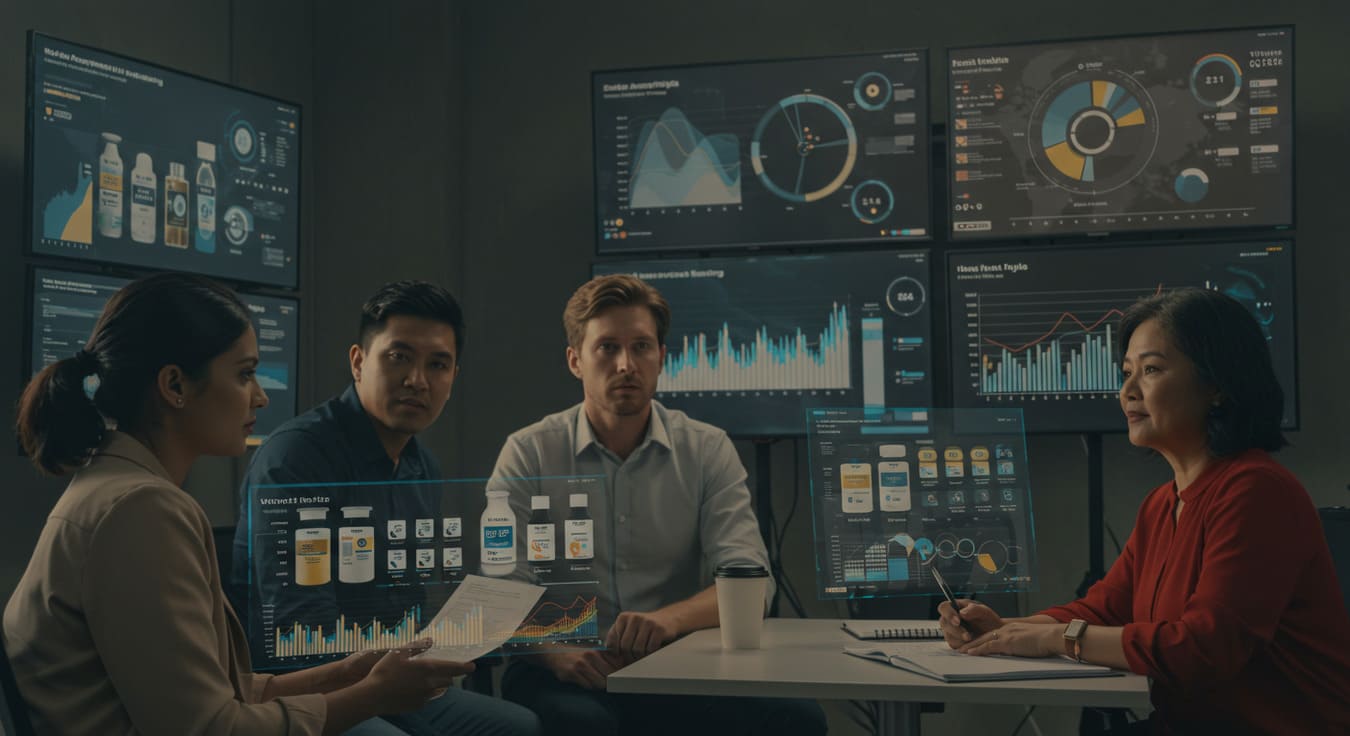Trade-off Analyses in Business

I’ve learned that mastering trade-off analyses is the difference between thriving and barely surviving in today’s hyper-complex business environment.
Have you ever made a business decision that felt like choosing between breathing and drinking water? I have. The year was 2012, and as CEO of การวิจัยระหว่างประเทศของ SIS, I faced a brutal choice: invest in expanding our digital capabilities or strengthen our global field operations. The spreadsheets offered conflicting advice.
The executives were divided. That’s when I discovered the transformative power of trade-off analyses in business. Not the superficial pros-and-cons lists that fill MBA textbooks, but a rigorous, multi-dimensional framework that cuts through complexity like a hot knife through butter.
Table of Contents
✅ Listen to this PODCAST EPISODE here:
The Core Framework for Effective Trade-off Analyses in Business
At its essence, trade-off analyses in business is about explicitly identifying what you’ll gain and what you’ll sacrifice with each potential decision pathway.
Truly effective trade-off analyses in business require mastering:
- How to quantify both the benefits and costs of each option (not just the upside)
- Which trade-offs align with your strategic positioning (not all sacrifices are equal)
- How to translate complex analyses into decisive actions (not analysis paralysis)
- When to apply different trade-off methodologies for different business questions (using the wrong approach leads to disastrous decisions)
Why Most Businesses Get Trade-off Analyses Catastrophically Wrong

Trade-off analyses in business isn’t sexy. It doesn’t get featured in business magazines. It won’t make you the star of a TED Talk. But it’s the hidden superpower behind virtually every successful business I’ve worked with
Let’s start with a hard truth. Most business leaders think they’re good at analyzing trade-offs. They’re not. Not even close.
Here’s what happens: They create a simple pros and cons list. They assign arbitrary weights to factors without validation. They rush the process to “get it done.” Then they wonder why their carefully analyzed decision blows up in their faces six months later.
Trade-off analyses in business aren’t about finding the perfect option. It’s about understanding the precise nature of the imperfections in each option, and then choosing the one whose weaknesses you can best mitigate.
The Science Behind Effective Trade-off Analyses
ที่ เอสไอเอส อินเตอร์เนชั่นแนล, we’ve refined trade-off analyses into a disciplined science. The approach combines:
Multi-Criteria Decision Analysis (MCDA)
This structured approach helps decompose complex decisions into manageable components. One financial services client used our MCDA framework for trade-off analyses when allocating their $240 million innovation budget. The process revealed that they were systematically undervaluing long-term investments and overvaluing quick wins. The rebalanced portfolio delivered 27% higher returns over three years.
Behavioral Debiasing
Human brains are prediction machines – bad ones. Our trade-off analysis methodology actively counters the cognitive biases that poison decision quality.
Real-World Applications That Transform Decision Quality

Theory is nice. Results are better.
In 2021, our global strategy team worked with a healthcare provider facing a digital transformation dilemma. Build or buy? The traditional trade-off analyses pointed to building internally. Our enhanced approach revealed hidden capability gaps that would have made internal development a costly disaster. The revised decision to acquire technology saved them 18 months and approximately $23 million.
Another case: a consumer packaged goods company needed to choose between two manufacturing locations. The obvious trade-off analyses factors – costs, taxes, logistics – favored Location A. Our comprehensive approach considered 27 additional factors including talent availability, cultural fit, and geopolitical risks. Location B emerged as the clear winner. Three years later, their competitors who chose Location A were struggling with 40% higher operating costs due to factors that never appeared in their simplified trade-off analyses.
Four Deadly Trade-off Analyses Sins
First, focusing only on quantifiable factors. The most important trade-offs often involve intangibles that resist simple measurement. Our approach incorporates structured methods for assessing qualitative factors without false precision.
Second, ignoring time horizons. Trade-off analyses that don’t distinguish between short, medium, and long-term impacts are worse than useless. We helped an energy company revise its investment trade-off analyses to properly account for different time horizons, resulting in a portfolio that balanced immediate needs with future positioning.
Third, conducting trade-off analyses in silos. A decision that looks optimal for marketing may create disasters for operations. Our cross-functional approach ensures all perspectives are integrated.
Fourth, neglecting implementation feasibility. A retail chain’s trade-off analyses identified a promising new store concept but failed to consider its ability to execute it at scale. Our methodology incorporates execution risk directly into the evaluation framework.
Advanced Techniques in Modern Trade-off Analyses
The practice of trade-off analyses in business has been dramatically transformed by analytical approaches most companies haven’t even heard of. Three approaches are revolutionizing trade-off analyses in business:
- Multi-Attribute Utility Theory (MAUT): This powerful framework for trade-off analyses in business forces decision-makers to weigh and score different attributes based on their relative importance. As research shows, this prevents the common trap of making decisions based solely on the most easily measurable factors. A healthcare system used MAUT-based trade-off analyses in business to optimize their facility expansion strategy, resulting in 23% higher patient satisfaction while actually reducing capital expenditure.
- Even Swap Method: This elegantly simple approach to trade-off analyses in business systematically eliminates irrelevant criteria from complex decisions. A manufacturing client used even swap trade-off analyses in business to restructure their supplier relationships, improving quality metrics by 31% while reducing procurement costs by 14%.
- Conjoint-Based Simulations: This cutting-edge approach to trade-off analyses in business identifies optimal decision pathways by simulating thousands of potential scenarios. A financial services firm used conjoint-based trade-off analyses in business to redesign their service packages, increasing customer acquisition by 28% in a stagnant market.
Overcoming Resistance to Trade-off Analyses in Business

The most powerful application of trade-off analyses in business comes when it’s applied across traditional departmental boundaries.
Let’s address the psychological and organizational barriers that prevent most companies from embracing rigorous trade-off analyses in business.
The most insidious obstacle? Leadership cultures that reward confident decisive action over thoughtful analysis. We once watched a charismatic CEO dismiss comprehensive trade-off analyses in business with a wave of his hand, declaring “analysis paralysis” before making a gut decision that eventually cost the company $14 million.
Another massive barrier is the human tendency to avoid explicitly acknowledging what we’re giving up. We recently launched specialized decision consulting services because we kept seeing companies make catastrophic choices by focusing exclusively on potential benefits while remaining willfully blind to inevitable costs.
To overcome these persistent challenges:
- Create psychological safety for discussing trade-offs openly – reward intellectual honesty over false certainty
- Implement structured frameworks that force explicit recognition of what’s being sacrificed
- Use visualization tools that make trade-offs impossible to ignore
- Start with smaller decisions to build organizational comfort before tackling major strategic choices
What Makes SIS International a Top Partner for Trade-off Analyses
When facing complex business decisions with significant trade-offs, not all research and consulting partners are created equal. Here’s why organizations worldwide trust SIS International to guide their most critical trade-off analyses:
What Sets Us Apart
✔ GLOBAL REACH: Our trade-off analyses expertise spans 120+ countries, allowing us to capture regional nuances that affect decision outcomes across diverse markets. Last year alone, we facilitated trade-off analyses for multinational clients operating in 32 different regulatory environments.
✔ 40+ YEARS OF EXPERIENCE: Since 1984, we’ve refined our trade-off analyses methodologies through thousands of high-stakes decisions across virtually every industry. This depth of experience means we’ve likely encountered challenges similar to yours and know the pitfalls to avoid.
✔ GLOBAL DATA BASES FOR CONTEXTUAL INSIGHTS: Our proprietary databases provide crucial contextual information that elevates trade-off analyses from theoretical to practical.
✔ IN-COUNTRY STAFF WITH OVER 33 LANGUAGES: Cultural factors significantly impact how trade-offs should be evaluated in different markets. Our native researchers understand the subtle operational, regulatory, and cultural factors that influence decision outcomes in each region.
✔ GLOBAL DATA ANALYTICS: Our advanced analytics platform processes massive datasets to identify decision patterns that would be impossible to detect manually.
✔ AFFORDABLE RESEARCH: Our efficient methodologies mean you get world-class trade-off analyses insights without the inflated price tag. We’ve structured our approach to deliver maximum decision value while respecting budget constraints.
✔ CUSTOMIZED APPROACH: No two decisions are identical. Our trade-off analyses methodologies are tailored to your specific business context rather than forcing your needs into a standardized template.
FAQ: Trade-off Analyses Essentials
What exactly are trade-off analyses, and how does it differ from standard decision-making?
Trade-off analyses in business are a systematic approach to evaluating competing alternatives when not all objectives can be maximized simultaneously. Unlike basic decision-making, which often focuses on identifying the “best” option, proper trade-off analyses recognize that each choice involves compromises and seek to understand the precise nature of these compromises.
What’s the ROI we can expect from investing in formal trade-off analyses?
While results vary by industry and application, our clients typically see ROI ranging from 500-1200% on major decisions subjected to rigorous trade-off analyses.
Can trade-off analyses help when we need to make decisions under extreme uncertainty?
Absolutely! This is where formal trade-off analyses truly shines. By incorporating structured approaches to uncertainty like Monte Carlo simulations, scenario planning, and options valuation, we can identify which choices preserve flexibility while minimizing downside risk.
How do trade-off analyses work in complex organizational environments with multiple stakeholders?
Multi-stakeholder trade-off analyses require specialized approaches that account for different objectives and influence levels. We map stakeholder priorities, identify areas of alignment and conflict, and develop options that create sustainable value.
How much data do we need for reliable trade-off analyses?
Effective trade-off analyses balance analytical rigor with practical constraints. While more data generally improves decision quality, we’ve developed methods that work with limited information.
Can trade-off analyses help us understand why our previous strategic decisions didn’t deliver the expected results?
This is precisely where retrospective trade-off analyses deliver unique value. By reverse-engineering the decision process, we can identify whether the problem was in the options considered, the factors evaluated, the weights assigned, or the implementation executed.
สถานที่ตั้งโรงงานของเราในนิวยอร์ก
11 E 22nd Street, ชั้น 2, นิวยอร์ก, NY 10010 T: +1(212) 505-6805
เกี่ยวกับ เอสไอเอส อินเตอร์เนชั่นแนล
เอสไอเอส อินเตอร์เนชั่นแนล เสนอการวิจัยเชิงปริมาณ เชิงคุณภาพ และเชิงกลยุทธ์ เราให้ข้อมูล เครื่องมือ กลยุทธ์ รายงาน และข้อมูลเชิงลึกเพื่อการตัดสินใจ นอกจากนี้เรายังดำเนินการสัมภาษณ์ การสำรวจ การสนทนากลุ่ม และวิธีการและแนวทางการวิจัยตลาดอื่นๆ ติดต่อเรา สำหรับโครงการวิจัยการตลาดครั้งต่อไปของคุณ


